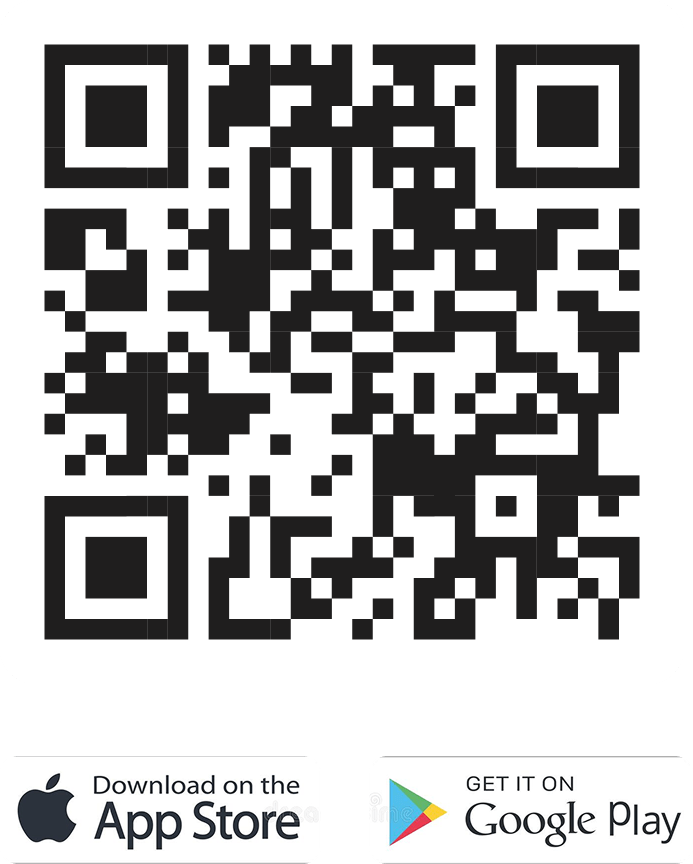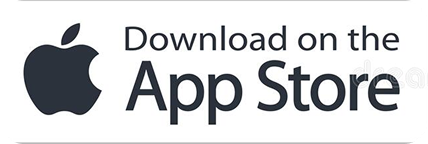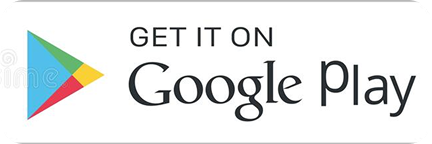
11 min read
How Mental Health Resources and Employee Counseling Improve Workplace Wellness
Employee counseling and mental health resources reduce stress, prevent burnout, and build a positive work culture. Learn how these programs boost morale, productivity, and retention while improving overall workplace wellness.
.jpg%3F2025-09-13T12%3A23%3A58.533Z&w=3840&q=100)
In this article
Let's be honest. The line between work and life is more blurred than ever. Stress, anxiety, and personal challenges don't magically disappear when we log in for the day. They follow us into the office (or our home offices), quietly impacting our focus, creativity, and overall well-being. As leaders and HR professionals, we’re not just managing workloads; we’re supporting people. And a key part of that support is investing in robust mental health resources, with the Employee Assistance Program (EAP) often serving as the cornerstone.
This isn't just a "nice to have." It's a strategic imperative. Companies that champion mental wellness don't just build a happier workforce, they build a more resilient, engaged, and productive one. When platforms like Visit Health report a 90% employee satisfaction rate among their corporate clientele, it’s a clear indicator that holistic support truly resonates. Let's explore how these resources, especially EAPs and counseling, transform workplaces from the inside out.
Key Takeaways
- Employee Assistance Programs (EAPs) offer confidential, free counseling and practical resources to help employees manage stress, anxiety, and personal challenges effectively.
- Companies promoting EAPs see up to 20% higher participation rates and improved employee satisfaction, morale, and productivity.
- EAPs typically include short-term counseling, crisis intervention, stress management coaching, legal and financial advice, and family support services.
- Integrating EAPs with wellness initiatives leads to lower absenteeism and enhanced job satisfaction among employees.
- Educating employees about EAP availability and simplifying access is essential to reduce stigma and increase utilization.
- EAPs serve as an early intervention tool that prevents escalation of mental health issues, supporting overall workplace wellness.
Understanding Employee Assistance Programs and Their Role in Mental Health Support
.jpg%3F2025-09-13T12%3A26%3A33.044Z&w=3840&q=100)
Think of an Employee Assistance Program (EAP) as a confidential, compassionate first line of defense for your team members. It's a work-based intervention program designed to help employees navigate personal or work-related problems that might be adversely affecting their performance, health, and overall well-being. Far from a simple perk, a well-utilized EAP is a powerful signal that your company genuinely cares about its people, providing essential mental health support and employee counseling. It's a commitment to human capital.
What Constitutes an Employee Assistance Program?
So, what exactly are you getting with an Employee Assistance Program? It's more than just a hotline. A comprehensive EAP is a treasure trove of mental health resources, typically including:
- Short-Term, Confidential Counseling: Employees get free, private access to licensed professionals for issues like stress, anxiety, grief, or relationship struggles.
- Crisis Intervention: Immediate support for acute issues, such as a traumatic event in the workplace or personal life.
- Work-Life Balance Support: Referrals and resources for childcare, eldercare, legal advice, and financial consulting.
- Managerial Consultations: Guidance for leaders on how to approach an employee they’re concerned about and make a supportive referral.
In practice, this might look like an employee quietly accessing three to five counseling sessions through their EAP to manage pandemic-related anxiety, all completely confidential and free of charge. It’s a safe space to find help without fear of judgment. Platforms like Visit Health, for instance, integrate EAP solutions that address four critical dimensions of wellness: Physical, Emotional, Legal, and Financial well-being, highlighting this multi-faceted support.
The Connection Between EAPs and Employee Counseling
The heart of a great EAP is its counseling component. This is where employee counseling moves from a concept to tangible mental health support. The connection is direct and powerful: EAPs provide the accessible, stigma-free gateway that encourages employees to seek help early, before small issues become overwhelming crises.
This proactive approach is crucial. Instead of waiting for a breakdown or a resignation letter, employee counseling through an EAP offers tools for stress management, coping strategies, and a neutral party to talk to. This early intervention not only helps the individual but also prevents the wider ripple effects of lost productivity and team disruption. It’s a classic case of a stitch in time saving nine, preserving both individual well-being and team cohesion.
The Impact of Mental Health Resources on Employee Wellness and Stress Management
When we talk about employee wellness, we're really talking about the whole person. Providing robust mental health resources is one of the most effective ways to demonstrate a commitment to that holistic view. The impact is tangible: companies that actively promote these resources see dramatic improvements in morale, a culture of trust, and, crucially, a significant reduction in chronic stress. This translates into stronger, more resilient teams, ready to face workplace demands.
Types of Mental Health Resources in the Workplace
A modern, effective corporate wellness strategy uses a multi-faceted approach to mental health. Beyond the EAP, forward-thinking companies are layering in:
- Mental Health Training & Workshops: Educating teams on topics like mindfulness, recognizing burnout, and psychological safety.
- Digital Wellness Platforms: Apps that offer on-demand meditation, sleep stories, and mood tracking. Many platforms also include AI Symptom Checkers and AI-powered healthcare assistants for personalized insights and goal-based triggers.
- Peer Support Networks: Creating safe, internal groups where employees can share experiences and support one another.
- Dedicated Mental Health Days: Encouraging employees to take time off specifically to rest and recharge, no questions asked.
The goal is to create an ecosystem of support, so every employee can find a resource that resonates with them. This kind of comprehensive offering is what makes platforms like Visit Health so impactful for their 5000+ corporate clients.
Stress Management Techniques Supported by Mental Health Programs
Effective stress management is a skill, and it's one that workplace wellness programs can teach. These programs move beyond telling employees to "lessen stress" and instead give them practical tools. Common techniques include:
- Mindfulness and Meditation: Guided sessions to help center thoughts and reduce anxiety in the moment.
- Cognitive Behavioral Therapy (CBT) Techniques: Tools to help employees reframe negative thought patterns that contribute to stress.
- Time Management Coaching: Helping employees prioritize tasks, set boundaries, and avoid the trap of constant busyness.
- Physical Wellness Integration: Encouraging short walking breaks or stretching, which are proven to reduce cortisol levels.
By equipping your team with these strategies, you're not just putting a bandage on stress; you're building a more resilient workforce capable of handling pressure in a healthy way.
Holistic Approaches to Employee Wellness: Integrating Physical Activity and Mental Health Benefits
We can't talk about mental well-being without talking about the body. The mind and body are inextricably linked, which is why a truly effective strategy embraces holistic employee wellness. This means integrating physical health initiatives with mental ones to create a powerful, synergistic effect that maximizes mental health benefits. This synergy is evident in platforms that combine robust EAP offerings with extensive fitness networks, such as Visit Health providing access to 2000+ gyms and fitness studios across India through CULT access.
How Physical Activity Enhances Mental Health in the Workplace
The science is clear: physical activity improves mental health. It’s not just about weight loss or physical fitness. Exercise releases endorphins (natural mood lifters), reduces stress hormones like cortisol, and improves sleep quality. Even small amounts of movement can have a dramatic impact.
Employers can encourage this by:
- Promoting walking meetings instead of sitting in a conference room.
- Offering subsidized gym memberships or on-site fitness classes, or providing access to broad networks of fitness studios.
- Starting a company-wide step challenge to foster camaraderie and movement, potentially with gamified rewards like "FITCoins" redeemable at popular brands.
- Simply encouraging regular five-minute stretch breaks throughout the day.
When you encourage movement, you're not just building healthier bodies; you're actively cultivating clearer, calmer, and more focused minds.
Benefits of a Holistic Employee Wellness Program
A siloed approach to wellness is a missed opportunity. A holistic employee wellness program that weaves together mental, physical, and financial health creates a powerful support system for the entire employee. The benefits are profound:
- Reduced Healthcare Costs: Preventive care and early intervention lead to fewer expensive medical claims.
- Dramatically Lower Burnout: Employees feel supported in all aspects of their lives, leading to greater resilience.
- Improved Attraction & Retention: A holistic culture is a powerful recruiting tool and a reason for top talent to stay.
- A Stronger, More Positive Culture: It builds an environment of mutual care and respect, where people feel safe to be their whole selves.
This isn't a cost center; it's an investment in your company's most valuable asset. It's about providing comprehensive health benefits that extend beyond traditional insurance coverage.
Overcoming Challenges in Implementing Mental Health Resources and Employee Counseling
.jpg%3F2025-09-13T12%3A33%3A02.535Z&w=3840&q=100)
Even with the best intentions, implementation can be tricky. The two biggest hurdles are stigma and low utilization. An amazing Employee Assistance Program is useless if no one feels comfortable using it.
Common challenges include employees fearing confidentiality breaches, managers not knowing how to promote the programs, or a simple lack of awareness. This is why platforms must ensure seamless claims experience and data-smart approaches to guide employees, especially considering that over 3 lakh claims were processed in the last year by services like Visit Health. Issues with reimbursement claims and booking cashless pathology tests are real friction points that need continuous improvement to build individual user trust.
Measuring the Impact of Mental Health Programs on Workplace Wellness
To overcome these challenges and prove value, you must measure impact. How? Look at the data:
- Utilization Rates: Are more people using the EAP year over year? (A 5-7% usage rate is a common benchmark to beat).
- Employee Engagement Scores: Do survey results show improvements in questions related to support and well-being?
- Absenteeism and Presenteeism: Are fewer sick days being taken? Is productivity improving?
- Retention Rates: Are you keeping your talent longer?
By tying these mental health benefits to concrete metrics, you can build a compelling case for continued and expanded investment in corporate wellness, demonstrating a clear return that goes far beyond dollars and cents.
Conclusion: The Transformative Power of Mental Health Resources and Employee Counseling in Enhancing Workplace Wellness
Building a truly well workplace is a journey, not a destination. It requires ongoing commitment, compassion, and a genuine investment in your people. By leveraging an Employee Assistance Program, destigmatizing employee counseling, and building a culture rich with mental health resources, you do more than just improve metrics.
You transform lives. You give people the support they need to navigate life's inevitable challenges without sacrificing their professional performance. You build a community of trust and well-being that attracts the best and inspires them to do their best work. In the end, prioritizing workplace wellness through comprehensive mental health benefits is the ultimate strategy for building a sustainable, successful, and human-centered organization.
Frequently Asked Questions (FAQs)
1. What is an Employee Assistance Program (EAP) and how does it help?
An EAP is a free, confidential benefit provided by employers to offer support with life’s challenges. It helps by giving employees immediate access to licensed counselors for short-term issues, as well as resources for legal, financial, or family concerns, all aimed at improving their well-being and ability to perform at work.
2. How do mental health resources impact workplace productivity?
They have a direct positive impact. When employees have tools to manage stress, anxiety, and other challenges, they can focus better, collaborate more effectively, and are less likely to be absent. This leads to higher quality work and a more positive, productive environment for everyone.
3. Why is employee counseling important for workplace wellness?
Counseling provides a safe, confidential outlet for employees to address issues before they escalate. This early intervention prevents larger crises, reduces stigma, and shows employees they are valued as people, not just workers, which is fundamental to a healthy workplace culture.
4. What types of mental health resources can employers offer?
Beyond EAPs, employers can offer mindfulness and meditation workshops, mental health first aid training for managers, digital wellness app subscriptions, dedicated quiet rooms, and foster peer support groups to create a multi-layered support system. Platforms like Visit Health also offer AI-powered health assistants and an AI Symptom Checker as part of their digital health ecosystem.
5. How can companies encourage employees to use mental health programs?
The key is to normalize it. Leadership should talk about it openly, share resources regularly through multiple channels, ensure absolute confidentiality, and train managers to have compassionate, supportive conversations. Making access easy and stigma-free is essential.
"Take charge of your health today - book a quick online consultation and access expert mental health and wellness resources with Visit Health. Get started now!"
See how Visit makes it happen










